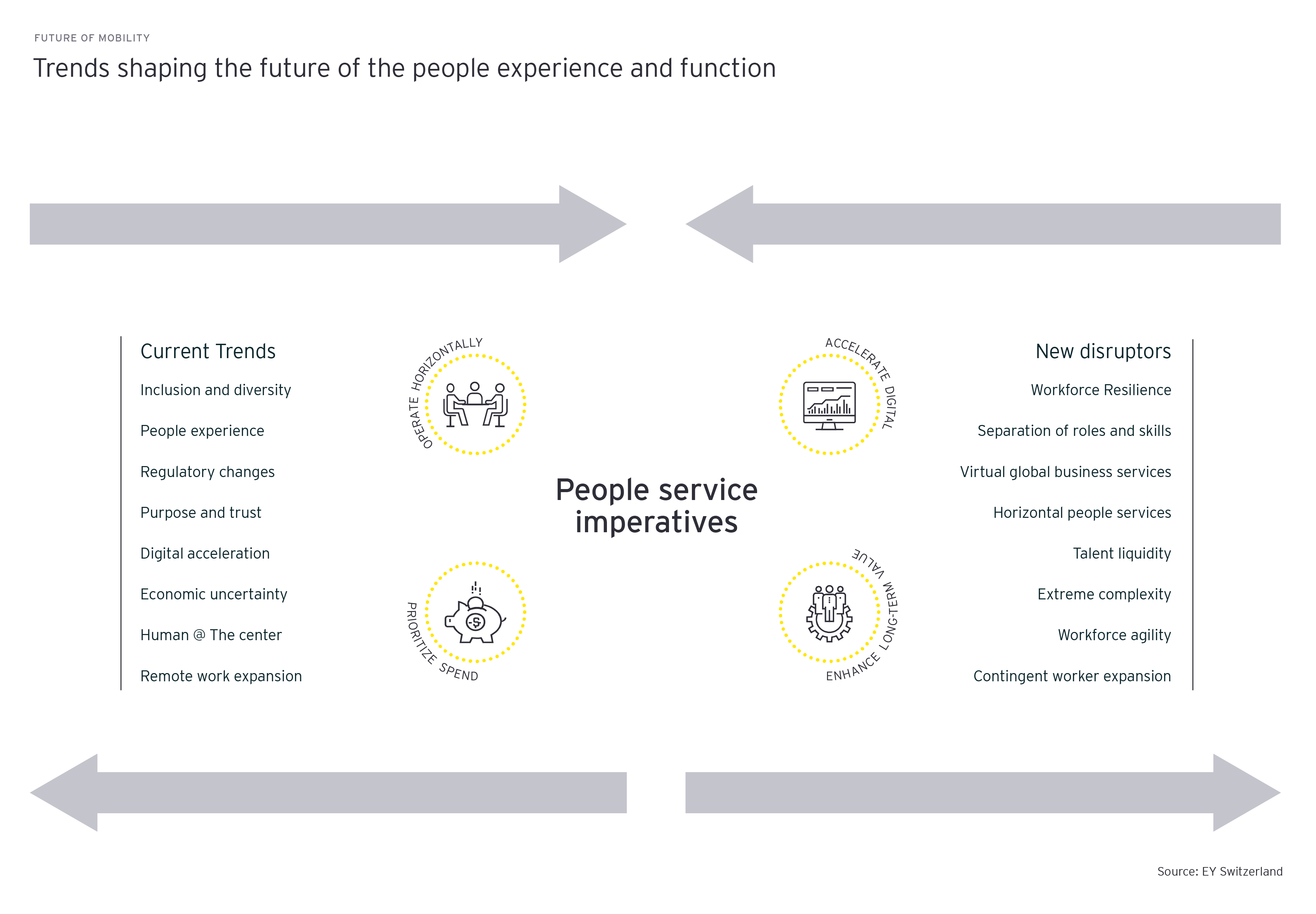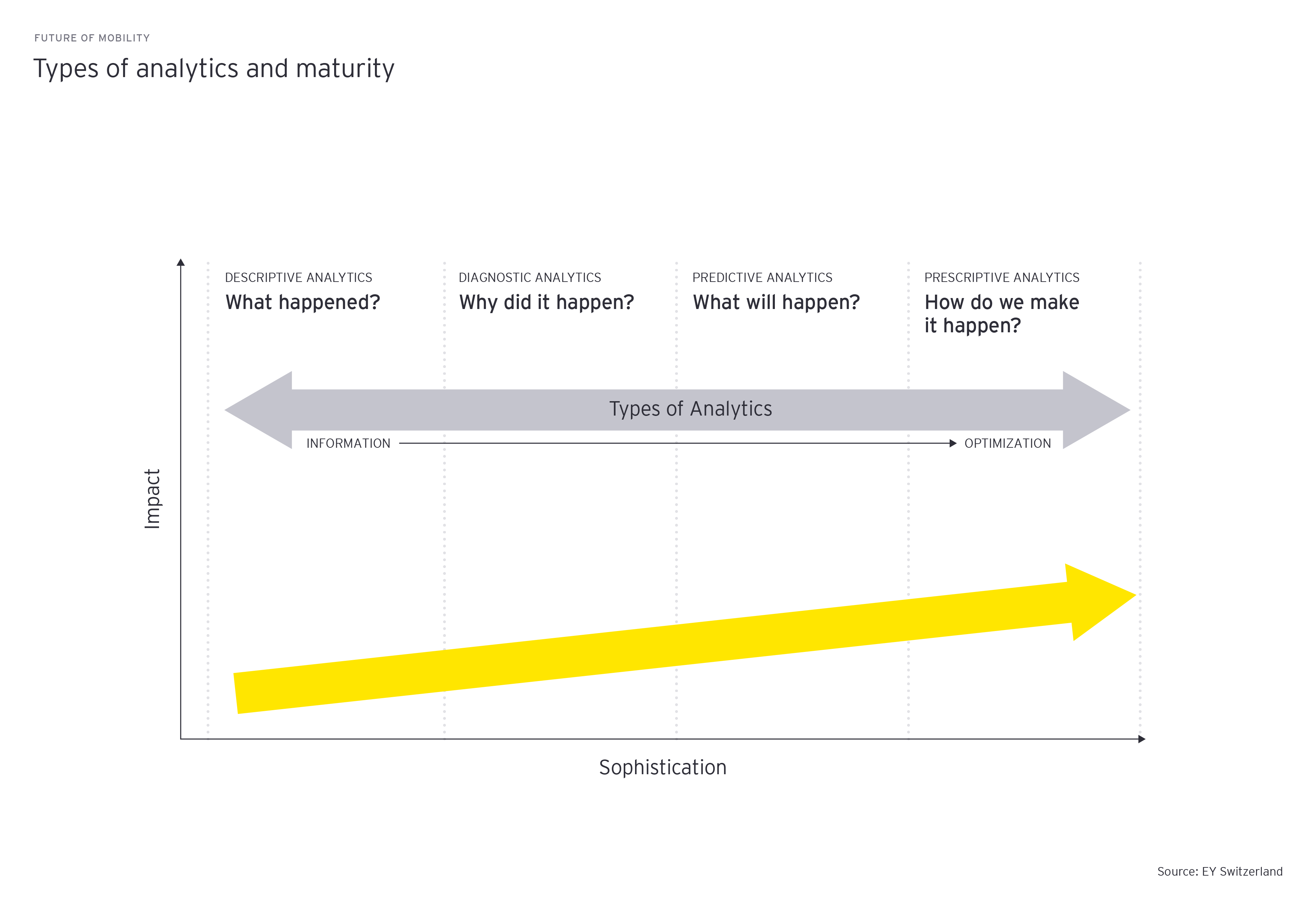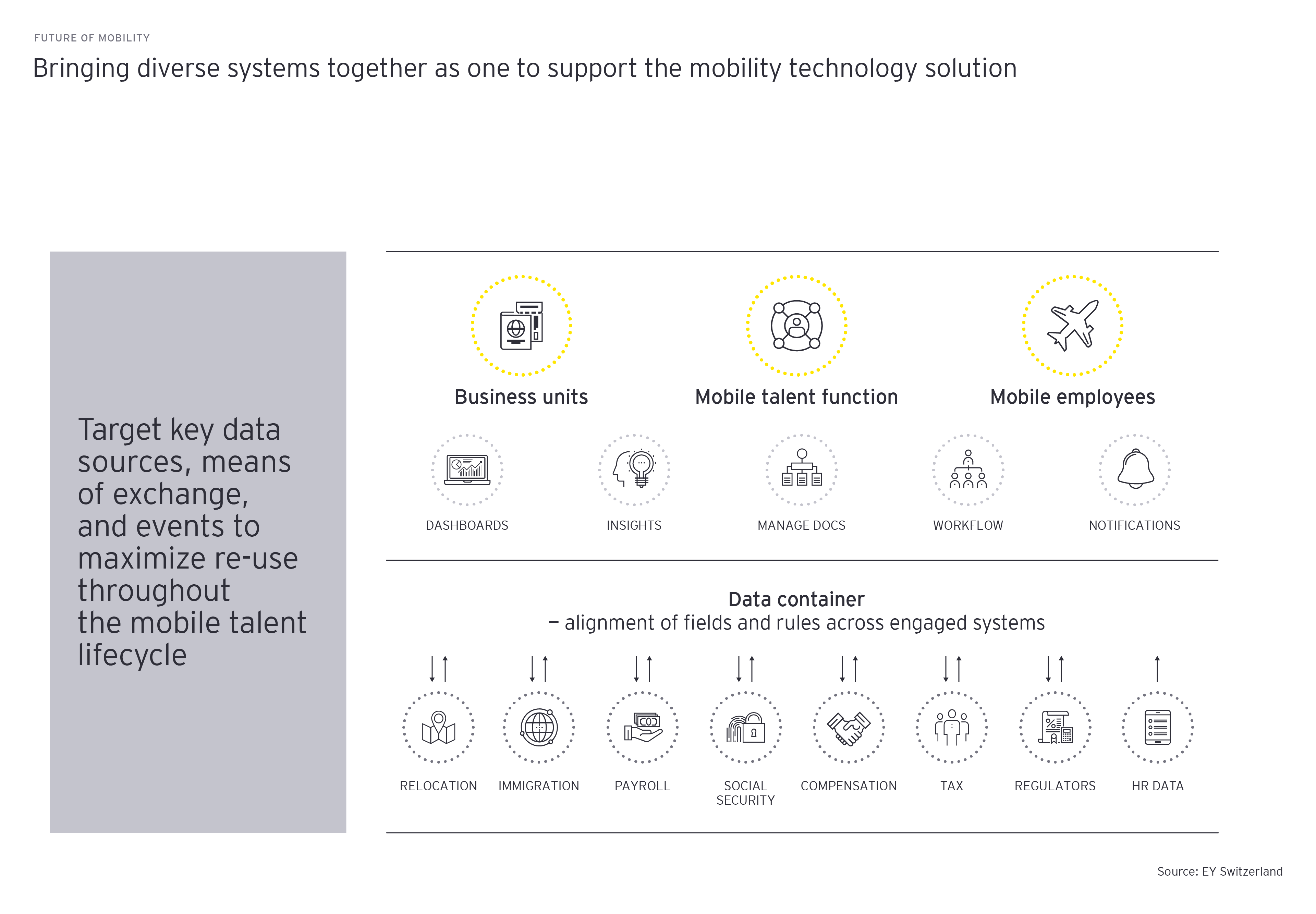Mobility as a business enabler
To be a key function for business, mobility should focus on the following main areas:
- Aligning employee and corporate experience
- Robust program delivery
- Leveraging data to make better decision
- Improvement of technology and innovation
Because of the pandemic, companies need to define what flexible and remote work mean for their organization. Employee experience remains a key. They should be asking questions like: do we need people in the office or in their current locations? Could our flexible work, or remote work, approach be more attractive to employees? If we can provide the required flexibility, would employees have a positive employee experience, and could they increase their performance and engagement? Overall, balancing the business needs while striving to be the employer of choice is critical in winning the battle for talent.
From an operational perspective, this means that organizations need to align policies, processes and the service delivery model to support the strategy. These considerations are key drivers to manage a remote and mobile workforce and to create a robust program delivery model.
Using data and analytics to deliver
A further key element to the mobility function is data and data analytics – a fascinating topic with endless opportunities. What’s also interesting is how little the mobility function is currently using potentially valuable data. The use of data analytics and leveraging data enables the mobility function to become a true business partner by providing the insights needed to make the right people and business decisions. Using data gives organizations the opportunity to measure the success of an assignment, or the return on investment (ROI), by taking into account all aspects of the assignment and mobility function: costs analysis, retention, performance, sustainability, D&I, succession planning, etc. With the right data, the business can see the overall impact on the organization and make fact-based decisions. To sum it up, data analytics in the mobility function enhances transparency, facilitates strategic decision-making process and optimizes opportunities.





